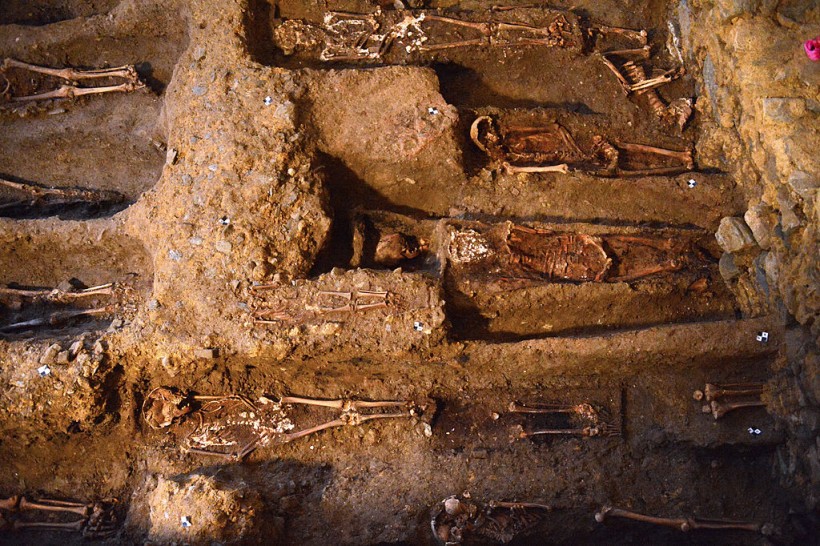Archaeologists in southern England recently reported 40 decapitated skeletons among the 425 bodies they found during an excavation in a late Roman cemetery. HS2 Ltd. said that the team of 50 archaeologists made the discovery at Fleet Marston, near Aylesbury, Buckinghamshire.
The ancient Roman cemetery is the largest of its kind in the area. For now, the skeletons archaeologists found are held in storage for further investigation.

The remains of a Gallo-Roman temple and 550 burials medieval and modern, including several lead sarcophagi, were unearthed in the center of Rennes during archaeological excavations on the site of the future Palais des Congres (Congress center).
Who Were These Decapitated Skeletons?
The ancient Roman cemetery in Buckinghamshire was discovered while surveying the Great Whelnetham village in Suffolk, England, ahead of the housing construction. According to Live Science, archaeologists were not surprised by the Roman cemetery in the area because archaeologists have known since 1964 that a Roman settlement existed because of the Roman artifacts they uncovered.
Although, the team of archaeologists involved in the recent excavation was surprised to find that there are numerous decapitated skeletons in the cemetery. An analysis of the remains reveals that they were beheaded postmortem.
Andy Peachey, an archaeologist with Archaeological Solutions, told Live Science that the incisions through the neck imply a postmortem operation, showing that it was nearly cut just behind the jaw. But an execution would have resulted in a cut in the lower neck with evidently applied violet force, which is not seen in the skeletons.
Science Alert reported that the skulls of the decapitated skeletons were placed between their legs next to their feet. Archaeologists think that perhaps these people were criminals or outcasts. On the other hand, beheading or decapitating the corpse was a "normal, albeit marginal, burial rite" during the late Roman period.
Researchers said that they will conduct further study on the skeletons found in ancient Roman cemeteries in the coming years to learn more about the historic lifestyles, diets, and beliefs of ancient Roman civilization.
HS2 Ltd., head of heritage Helen Wass, said that all human remains uncovered will be treated with care, dignity, and respect. Any knowledge they learn from their analysis will also be shared with the community.
Ancient Roman Artifacts Found in the Ancient Roman Cemetery
Aside from the hundreds of bodies they uncovered from the site, Evening Standard reported that the team also found over 1,200 coins, which suggests it was an area of trade and commerce, within more than one year of excavation in the area on behalf of Cotswold Archaeology and Oxford Archaeology (Copa), an HS2 contractor.
More so, they found domestic objects, such as spoons, pins, and brooches. Meanwhile, there were also gaming dice and bells in the area, which could mean that gambling and religious activities were also present.
Copa senior project manager Richard Brown said that the excavation is significant in enabling clear characterization of the ancient Roman town and many of its inhabitants in the past. Also, the discovery enhances and populates the map of Roman civilization that once lived in today's Buckinghamshire.
Fleet Marston is known for over 100 archaeological sites that HS2 has examined throughout the years as it accomplished the first phase of the railway project. Wass said that the HS2 archaeology program has enabled archaeologists to learn more about the rich history of Britain.
RELATED ARTICLE: Burial Site Filled With Glass, Silver, and Gold Dates Back to Ancient Kingdom
Check out more news and information on Archaeology in Science Times.














